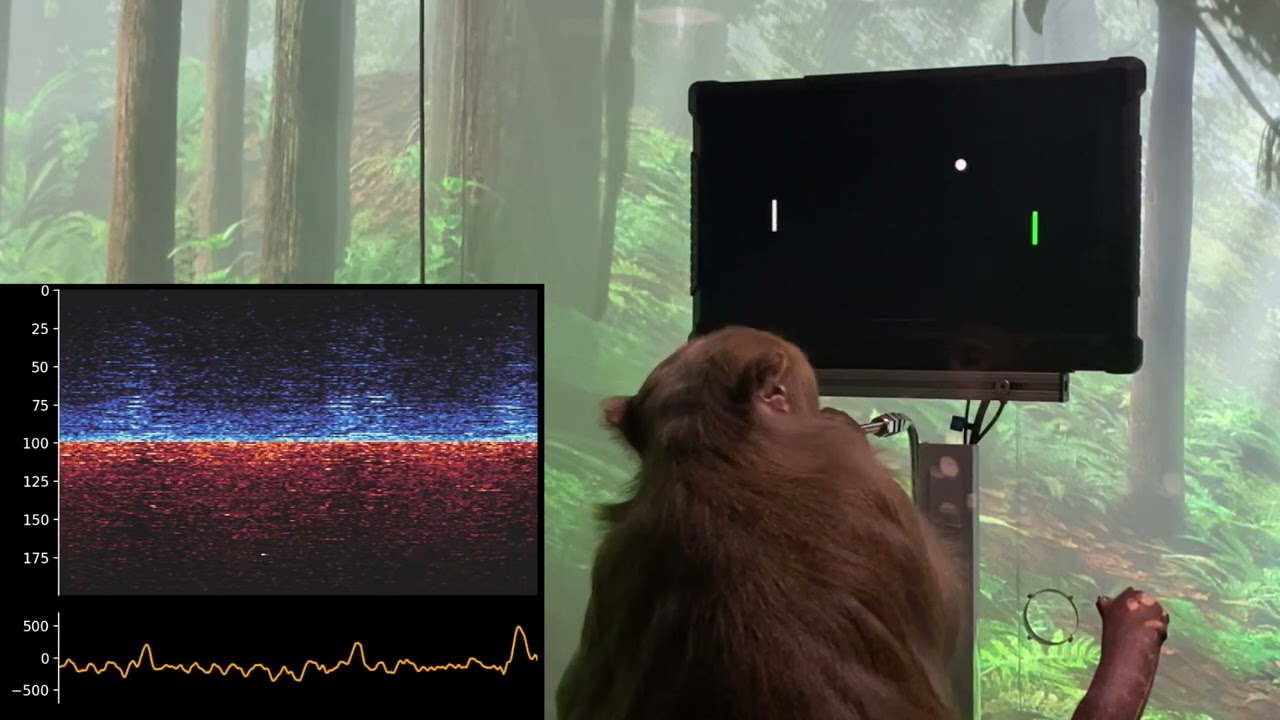
Elon Musk’s Neuralink startup has released this video of a nine year old macaque playing “MindPong” with his Neuralink.
Today we are pleased to reveal the Link’s capability to enable a macaque monkey, named Pager, to move a cursor on a computer screen with neural activity using a 1,024 electrode fully-implanted neural recording and data transmission device, termed the N1 Link. We have implanted the Link in the hand and arm areas of the motor cortex, a part of the brain that is involved in planning and executing movements. We placed Links bilaterally: one in the left motor cortex (which controls movements of the right side of the body) and another in the right motor cortex (which controls the left side of the body).
Neurons in somatosensory cortex respond to touch, and neurons in the visual cortex respond to visual cues. Analogously, neurons in motor cortex modulate their activity prior to and during movement, and are thought to be involved in planning, initiating and controlling voluntary movements. Many neurons in motor cortex are directionally tuned, that is, more active for particular movement directions than others. Different neurons are tuned to different movement directions. An example of this directional modulation can be seen in the raster plot to the right (Fig. 2).
By modeling the relationship between different patterns of neural activity and intended movement directions, we can build a model (i.e., “calibrate a decoder”) that can predict the direction and speed of an upcoming or intended movement. We can go further than simply predicting the most likely intended movement given the current pattern of brain activity: we can use these predictions to control, in real time, the movements of a computer cursor, or in the video below, a MindPong paddle. The neurons with upward preferred directions clearly increase their firing rates as the monkey moves his MindPong paddle upward, and the ones with downward preferred directions increase their firing rates as Pager moves his paddle downward.
There are a lot of words here. A lot of them big. As far as I can tell they put a bunch of stuff in a monkey, made the monkey move a ball around, analyzed how the movements matched up with its neural activity, and then created a pong game that was controlled by said neural activity. Assuming what we’re seeing is real, this is pretty remarkable. I’m talking, of course, about this macaque’s ability to operate a joystick while drinking a banana smoothie.
Keep going for the full video. The first couple minutes are the “training” and then the MindPong game starts around 2:15.
Source: Geekologie – Monkey plays ‘MindPong’ with his Neuralink.
